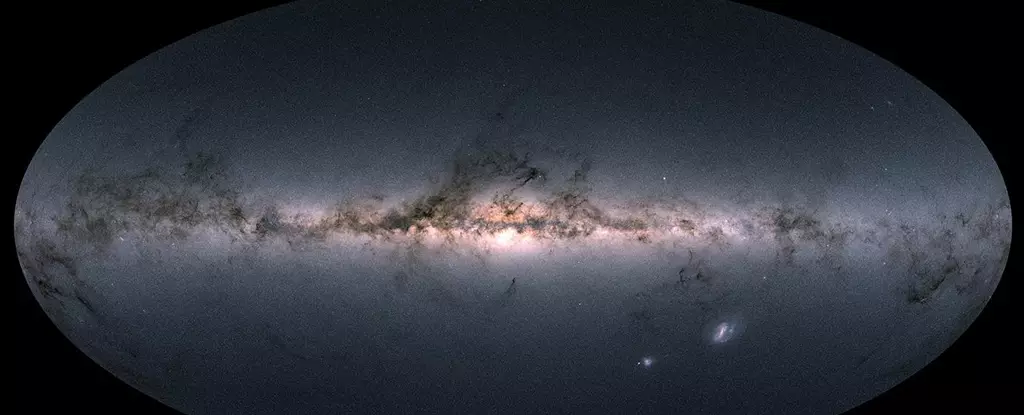The Milky Way, one of the billions of galaxies in the Universe, has not reached its current massive state without undergoing a series of collisions and mergers with other galaxies. This chaotic process is a common phenomenon throughout the cosmos, with galaxies constantly interacting and influencing one another. One of the most prominent examples of this cosmic dance is the Milky Way’s ongoing consumption of its two satellite galaxies, the Large and Small Magellanic Clouds. These celestial bodies are destined to merge with our galaxy, further contributing to its mass and structure.
Recent research has shed light on the Milky Way’s history, challenging previous assumptions about its past mergers. While scientists initially believed that the last major merger occurred between 8 and 11 billion years ago, new data from the European Space Agency’s Gaia mission suggests a more recent timeline. The Gaia spacecraft, launched in 2013, is meticulously mapping over 1 billion astronomical objects, predominantly stars, to track their positions and movements accurately. By analyzing the motions of stars within the Milky Way, researchers can identify subtle “wrinkles” that serve as remnants of past galactic collisions.
The concept of “wrinkles” in the Milky Way may sound abstract, but it refers to various morphological features like phase space folds, caustics, chevrons, and shells left behind by galactic mergers. These wrinkles alter the trajectories of stars within the Milky Way, providing clues about its merger history. Contrary to the common notion of wrinkles indicating aging, the Milky Way’s wrinkles dissipate over time, offering a reverse perspective on galactic evolution. Lead author Donlon compared this phenomenon to a “cosmic Benjamin Button,” emphasizing the galaxy’s gradual smoothing out over billions of years.
In addition to wrinkles, scientists study Fe/H-rich regions in the Milky Way as evidence of past mergers. By observing stars with a similar Fe/H ratio and eccentric orbits in a region known as ‘the Splash,’ researchers can infer a common origin for these stars. These anomalies in star composition and movement suggest that these stars were part of a distinct progenitor galaxy that merged with the Milky Way. Competing theories propose different scenarios for these mergers, such as the Gaia Sausage/Enceladus collision over 8 to 11 billion years ago or the more recent Virgo Radial Merger less than 3 billion years ago.
To untangle the complexities of the Milky Way’s merger history, scientists rely on simulations to match observational data with theoretical models. By running various simulations that recreate different merger scenarios, researchers can pinpoint the timing of past collisions and confirm the feasibility of these events. Recent data from Gaia has provided unprecedented clarity on the Milky Way’s structure, revealing intricate features like spirals and shells that hint at a rich history of mergers and interactions. This continuous influx of data from Gaia allows astronomers to refine their understanding of the Milky Way’s evolution rapidly.
As astronomers delve deeper into the Milky Way’s merger history, they uncover a complex tapestry of interactions involving multiple galactic entities. The Virgo Radial Merger, in particular, appears to have introduced a diverse array of dwarf galaxies and star clusters into the Milky Way less than 3 billion years ago. This ongoing research not only reshapes our understanding of the Milky Way’s formation but also provides valuable insights into the broader processes that govern galactic evolution. With each new discovery and data release from Gaia, our perspective on the Milky Way’s past continues to evolve, highlighting the dynamic nature of galactic interactions in shaping the cosmos.


Leave a Reply